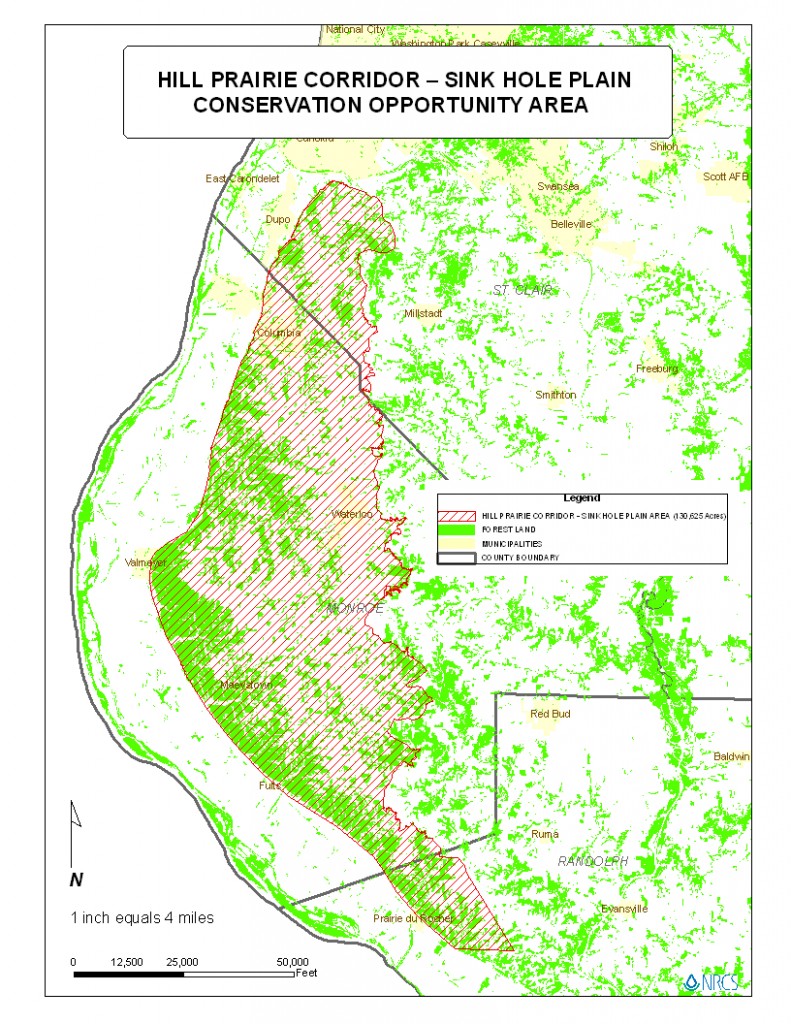SWIWAP
The Southwestern Illinois Wildlife Action Plan Partnership
In 2001, the U. S. Congress authorized the Wildlife Conservation and Restoration Program and the State Wildlife Grant Program. Taken together, these programs’ purposes are threefold: improve wildlife and habitat stewardship in hope of reducing the numbers of species requiring listing as threatened or endangered; lower overall wildlife recovery costs; and, address shortages in funding wildlife programs.
The U. S. Fish and Wildlife Service (USFWS) is designated the lead agency to manage these program efforts. The USFWS mandated that the governing focus be species in the greatest need of conservation, and that all states develop 10-year incremental plans to serve as blueprints in steering statewide overall wildlife management operations.
In 2005, the Illinois Wildlife Action Plan (IWAP), after an integrated effort on the part of over 100 state and federal agencies and non-governmental conservation organizations (NGO), was completed and approved by USFWS.
The IWAP identifies 31 Conservation Opportunity Areas (COAs) within Illinois, areas with special importance for conserving species in the greatest need and for preserving special natural communities.
 Two of the identified COAs, the Hill Prairie Corridor and the Karst Sinkhole Plain, form a contiguous 40-mile long, 2-6-mile wide, 130,000-acre corridor in Monroe, St. Clair and Randolph Counties in southwestern Illinois. A map of the COA is below.
Two of the identified COAs, the Hill Prairie Corridor and the Karst Sinkhole Plain, form a contiguous 40-mile long, 2-6-mile wide, 130,000-acre corridor in Monroe, St. Clair and Randolph Counties in southwestern Illinois. A map of the COA is below.
In 2007, a group of local conservation stakeholders developed an implementation plan (the Southwestern Illinois Wildlife Action Plan – SWIWAP) and partnership to carry out IWAP’s goals and recommendations for the Hill Prairie-Karst Sinkhole Plain COA. Principal partners include: the Illinois Department of Natural Resources, the Illinois Nature Preserves Commission, the Natural Resources Conservation Service, The Land Conservancy, the National Wild Turkey Federation, the Kaskaskia Valley Audubon Society, the Illinois Speleological Survey, the University of Illinois Extension Service, and three, local, landowner-based NGOs, Clifftop, the Saltlick Point Land and Water Reserve Stewardship Committee, and the Friends of Stemler Nature Preserves. Clifftop serves as the SWIWAP Partnership’s administrative agent and 501(c)(3), non-profit entity.
Since 2007, the SWIWAP Partnership has garnered $1.8 million dollars in federal, state and NGO funds for stewardship on privately-owned and state-managed lands and for conservation easements; the three local, landowner-based NGOs have contributed 10,000 volunteer hours toward conservation in the COA; and over 5,000 residents in the COA have attended Partnership-sponsored informational programs.
The Southwestern Illinois Wildlife Action Plan and Annual Reports of the Partnership are available here. The Illinois Wildlife Action Plan is at:
(http://dnr.state.il.us/orc/wildliferesources/theplan/)
The SWIWAP Report (2008); and Annual Reports from 2008 through 2012 are available here:
- Southwestern Illinois Wildlife Action Plan
- Southwestern Illinois Wildlife Action Plan Partnership 2008 Report
- Southwestern Illinois Wildlife Action Plan Partnership 2009 Report
- Southwestern Illinois Wildlife Action Plan Partnership 2010 Report
- Southwestern Illinois Wildlife Action Plan Partnership 2011 Report
- Southwestern Illinois Wildlife Action Plan Partnership 2012 Report
- Southwestern Illinois Wildlife Action Plan Partnership 2013 Report
